Discover 35 hidden attractions, cool sights, and unusual things to do in Poznań (Poland). Don't miss out on these must-see attractions: Fara Church, City Hall, and Poznań Cathedral. Also, be sure to include Museum of Applied Arts in your itinerary.
Below, you can find the list of the most amazing places you should visit in Poznań (Greater Poland).
Table of Contents
Fara Church
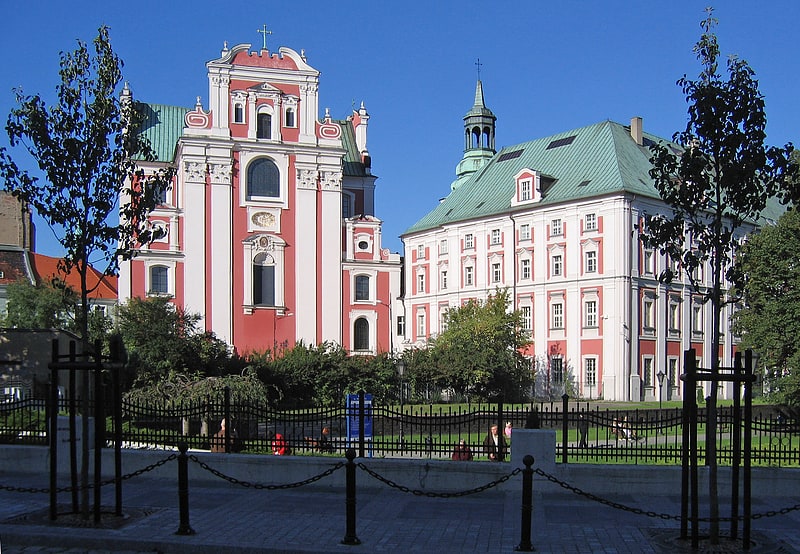
Poznań Fara, also known as the Parish Church or simply Fara, is a Roman Catholic basilica located in the heart of the Old Town district in Poznań, western Poland. It is one of the city's most recognizable landmarks, the most important Christian temple alongside the Cathedral and the finest example of Baroque architecture in Poland. The full name of the Church is Basilica of Our Lady of Perpetual Help, Mary Magdalene and Saint Stanislaus. It is currently part of the Roman Catholic Archdiocese of Poznań.
Built between 1651 and 1701, the structure was engineered by Polish and Italian masters in the Baroque style, who also incorporated Roman architectural aspects such as the monumental Corinthian columns in the interior. In the mid-18th century Pompeo Ferrari designed the main altar standing at 17 meters in height and the main entrance from the Old Town. In 1876 an organ constructed by Friedrich Ladegast was installed inside the Church. The Fara, like most of the city, was spared from destruction during World War II.[1]
Address: Klasztorna 11, 61-779 Poznań (Stare Miasto)
City Hall
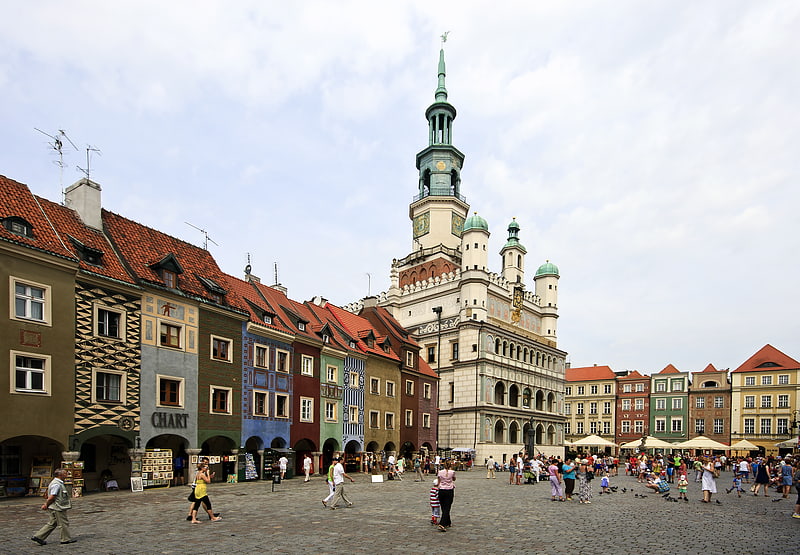
Also known as: Ratusz w Poznaniu
Museum in Poznań, Poland. Poznań Town Hall is a historic city hall in the city of Poznań, Poland, located at the Poznań Old Town in the centre of Old Market Square. It used to serve as the seat of local government until 1939, and now houses a museum. The town hall was originally built in the late 13th century following the founding of the medieval city in 1253; it was rebuilt in roughly its present-day form, in mannerist style, with an ornate loggia, by Giovanni Battista di Quadro in 1550–1560. The display of mechanical fighting goats, played out daily at noon above the clock on the front wall of the building, is one of the city's main tourist attractions.[2]
Address: Stary Rynek 1, 61-768 Poznań (Stare Miasto)
Poznań Cathedral
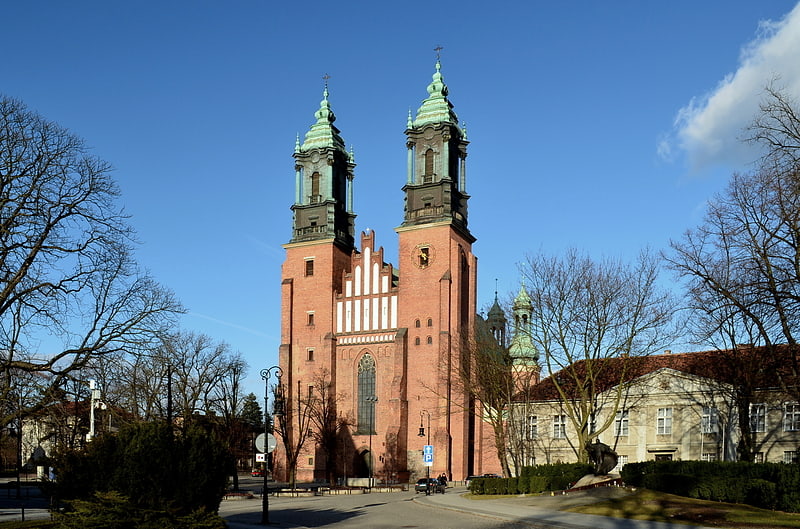
Also known as: Bazylika archikatedralna św. Piotra i Pawła
Gothic-style cathedral with 3 aisles. The Archcathedral Basilica of St. Peter and St. Paul in Poznań is one of the oldest churches in Poland and the oldest Polish cathedral, dating from the 10th century. It stands on the island of Ostrów Tumski north-east of the city centre.[3]
Address: Ostrów Tumski 17, 61-001 Poznań (Nowe Miasto)
Museum of Applied Arts
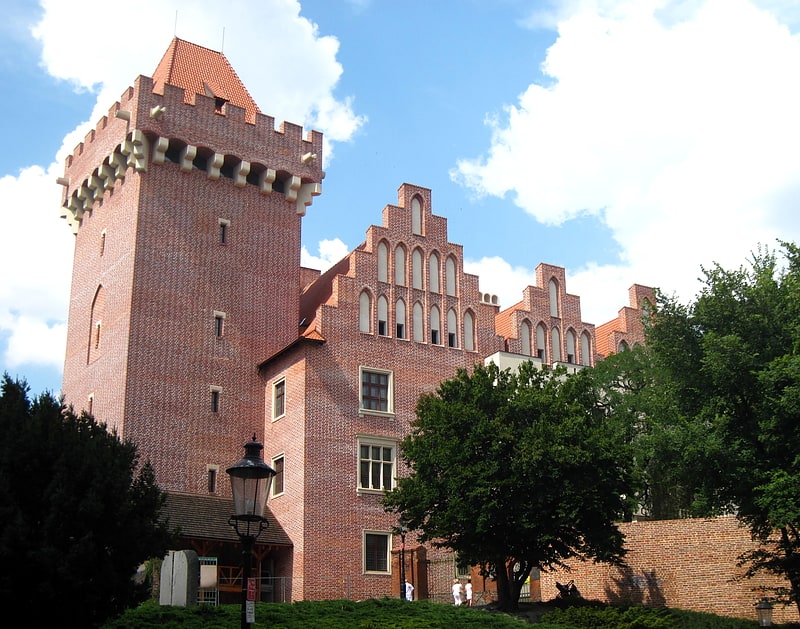
Museum of Applied Arts in Poznań is a branch of the National Museum in Poznań, art museum opened in 1965 as the Museum of Arts and Crafts. Since 1991, in connection with the expansion of the collection profile and the change of the exhibition, under the current name. It is located in the Royal Castle in Poznań, built in 1249, initially as a residential tower of the PoznańPrince Przemysl I.
As a branch of the National Museum in Poznań, it is entered in the State Register of Museums kept by the minister in charge of culture and national heritage protection.
The Museum has 11,000 exhibits, such as fabrics, furniture, glass, silver, and others, which are exhibited in chronological order, from the Middle Ages to the present day. It was closed for a long time because of the reconstruction of the Royal Castle. The reopening took place on 26 March 2017. Part of the rooms of the reconstructed royal residence is intended for the exposition of the museum's collections. A lookout tower had been opened earlier.[4]
Address: Góra Przemysła 1, 61-768 Poznań (Stare Miasto)
Museum of Historical Costume
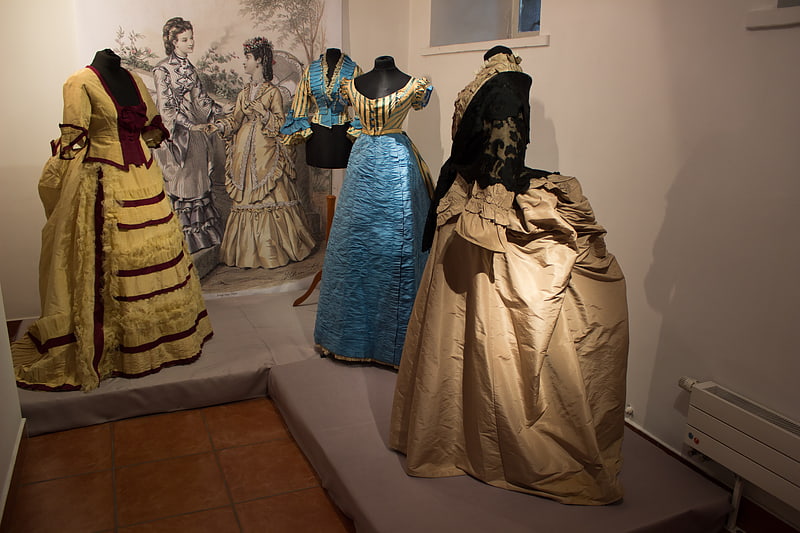
The Museum of Historical Costume in Poland is a private museum located in a tenement house on Kwiatowa Street 14/2 in Poznan, Poland. Founded in December, 2018 by Anna Moryto.[5]
Poznań Philharmonic
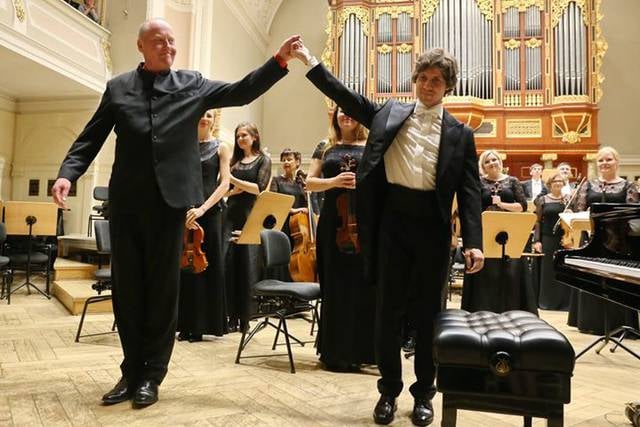
Tadeusz Szeligowski Poznań Philharmonic is a regional cultural institution founded in 1947 on the initiative of Tadeusz Szeligowski as the State Philharmonic in Poznań; one of the two philharmonics in the Wielkopolska Voivodeship.[6]
Address: Ul. Św. Marcin 81, Poznań (Stare Miasto)
Citadel Park
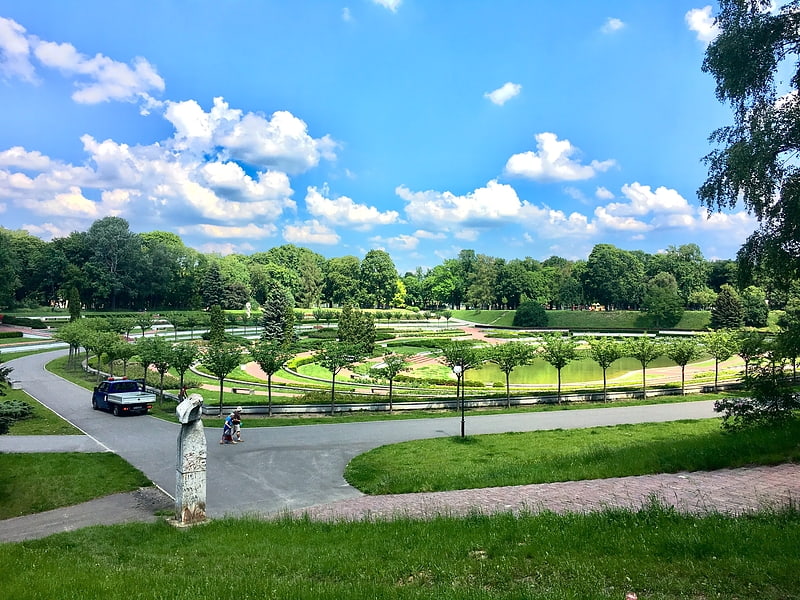
Also known as: Park Cytadela
Park in Poznań, Poland. Park Cytadela in Poznań is a large park on the site of Fort Winiary, a 19th-century fortified area north of the city centre. It contains a military museum, military cemeteries, and the remains of some of the fortifications. It lies within the Stare Miasto district of the city, south of Winogrady.
The site is listed as one of Poland's official national Historic Monuments (Pomnik historii), as designated November 28, 2008, along with other portions of the city's historic core. Its listing is maintained by the National Heritage Board of Poland.[7]
Lake Malta

Also known as: Jezioro Maltańskie
Man-made place for various activities. Lake Malta, known also as the Maltański Reservoir, is an artificial lake in Poznań, Poland. It was formed in 1952 as a result of the damming of the Cybina River. It is about 2.2 km long, which makes the lake the biggest man-made lake of the city. The water is 3.1 m deep on average with a maximum about 5 m. There are a number of recreational attractions along the edge of the lake including:
- an artificial ski slope,
- an artificial ice rink,
- a zoological garden,
- Kolejka Parkowa Maltanka - a narrow gauge railway,
- the Mound of Freedom,
- seasonal bikes rental - MaltaBike
The lake also has one of the oldest man-made rowing venues in Europe - The Malta Regatta Course. This dates back to 1952 and has held a number of Rowing World Cup events. It also hosted the ICF Canoe Sprint World Championships in 1990 and 2001, and did so again in 2010.
The lake also gives its name to the Malta theatre festival, held in Poznań annually in June, with some of the shows taking place next to the lake.
The name of the lake comes from the Knights Hospitaller also known as Knights of Malta. The lake was built on land owned by Church of St. John of Jerusalem Outside the Walls, given to the order in 1187 by duke Mieszko III the Old.
Because of the importance of the lake for the city of Poznań, various methods to improve its water quality have been investigated.[8]
Poznań Croissant Museum
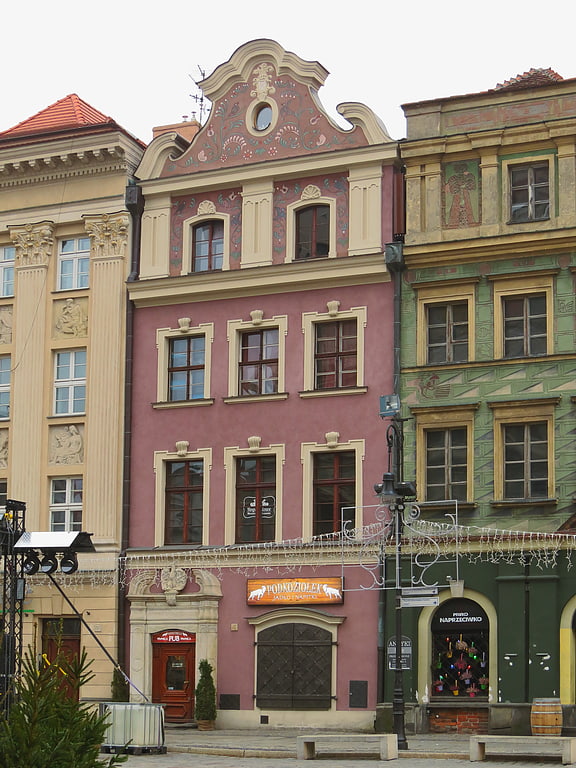
Rogalowe Muzeum Poznania is a museum of St. Martin's croissants, located in Poznań, at 41 Stary Rynek.
The museum is dedicated to the tradition of baking croissants, already 150 years old. Visiting the museum is interactive. During the show, visitors can learn how to produce a croissant according to the original recipe. The museum aims to promote Poznań culture and history, whose most characteristic elements are: Świętomarcińskie croissants, Poznań dialect and goats on the tower of the Town Hall. The Museum was founded by Szymon Walter.[9]
Address: 41/2 Stary Rynek, Poznań (Stare Miasto)
Grand Theatre
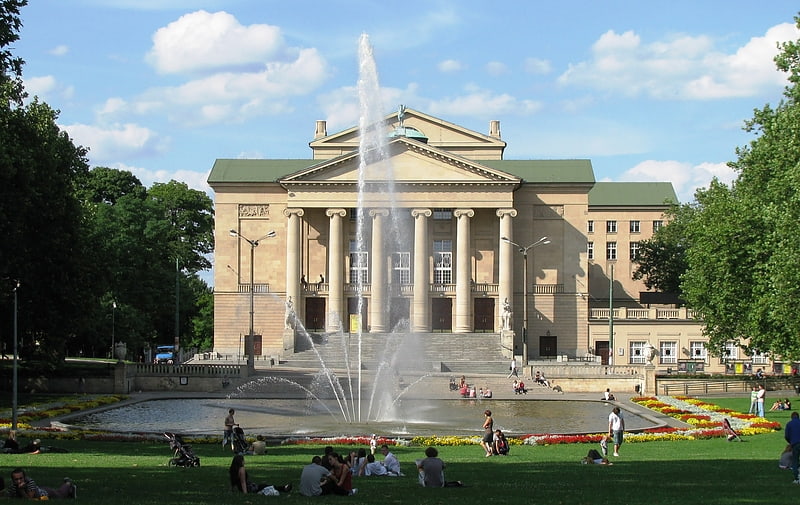
Also known as: Teatr Wielki im. Stanisława Moniuszki w Poznaniu
Theatre in Poznań, Poland. Grand Theatre, Poznań is a neoclassical opera house located in Poznań, Poland. It is named after famous Polish composer Stanisław Moniuszko.[10]
Imperial Castle
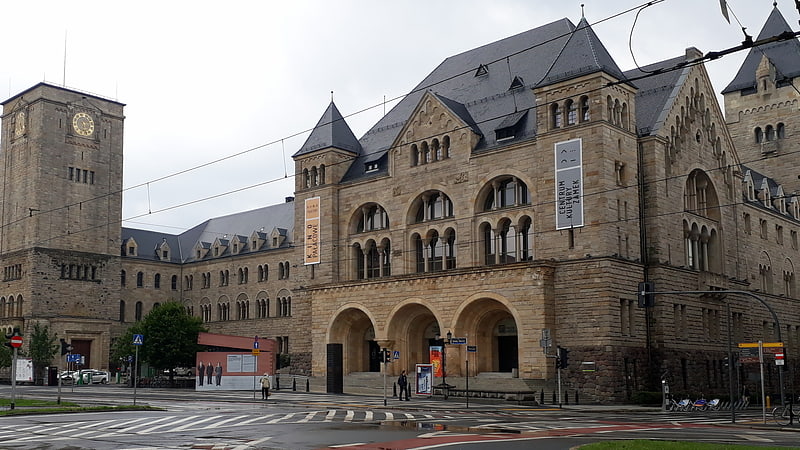
Also known as: Zamek Cesarski w Poznaniu
Neo-Romanesque palace with tours and pubs. The Imperial Castle in Poznań, popularly called Zamek, "the Castle", is a palace in Poznań, Poland. It was built under German rule in 1910 by Franz Schwechten for William II, German Emperor, with substantial suggestions from the Emperor.
Since its completion, the building has housed government offices of Germany (to 1918, and during World War II) and of Poland (1918–1939, 1945–present).[11]
Address: 80/82 Święty Marcin, Poznań (Stare Miasto)
Wielkopolska Museum of Independence
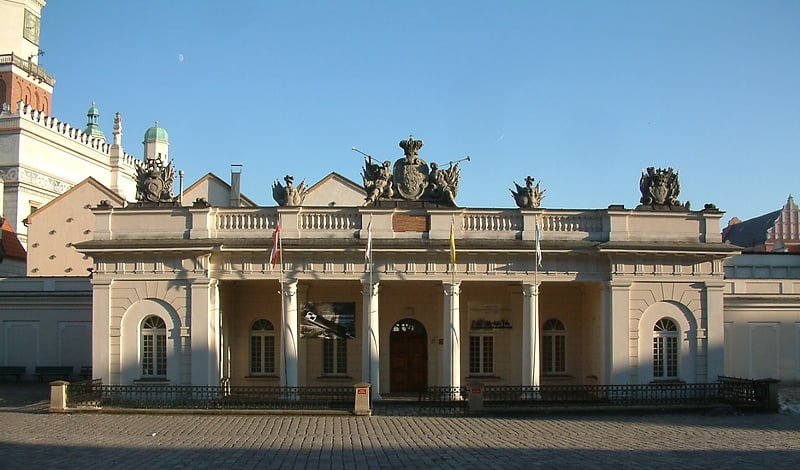
Wielkopolska Museum of Independence is a museum, a local cultural institution organized by the city of Poznań. The scope of the museum's activities includes collecting and making available collections on the independence uprisings and organic work during the partitions, the period of the Second Republic of Poland, fighting and martyrdom during World War II, as well as protests and opposition activities in the years 1945-1989. Before the name was changed, the museum was known as the Wielkopolska Museum of the Fight for Independence.
The Chairman of the Museum Council in the 2016–2020 term is professor Zbigniew Pilarczyk from Adam Mickiewicz University, while the Director is Tomasz Łęcki.
The museum is entered in the list of museums kept by the minister in charge of culture and national heritage protection.[12]
Lake Rusałka

Also known as: Jezioro Rusałka
Lake in Poland. Lake Rusałka is an artificial lake in Poznań, Poland with an area of 367,000 square metres. It was named after the water nymph Rusalka. It was formed in 1943 as a result of the damming of the Bogdanka River. In 1940 thousands of people were executed in the forests surrounding the lake.[13]
Pillory

Also known as: Pręgierz w Poznaniu
The Pranger of Poznań is found near the north-east corner of the Town Hall, not far from the Prozerpina Fountain. It is an eight-sided, late-Gothic column, on the summit of which stands a statue of an executioner in a Crusader's outfit holding a raised sword. The current pranger is a copy made by Marcin Rożek in 1925. The original is in the Museum of History of Poznań in the town hall. The pranger was constructed in 1535, financed by fines extracted from workers who wore too-elaborate outfits. The pranger was used to exact punishment through flagellation or the removal of ears or fingers.[14]
Address: Old Market Square, Poznań (Stare Miasto)
Poznań Fara

Poznań Fara, also known as the Parish Church or simply Fara, is a Roman Catholic basilica located in the heart of the Old Town district in Poznań, western Poland. It is one of the city's most recognizable landmarks, the most important Christian temple alongside the Cathedral and the finest example of Baroque architecture in Poland. The full name of the Church is Basilica of Our Lady of Perpetual Help, Mary Magdalene and Saint Stanislaus. It is currently part of the Roman Catholic Archdiocese of Poznań.
Built between 1651 and 1701, the structure was engineered by Polish and Italian masters in the Baroque style, who also incorporated Roman architectural aspects such as the monumental Corinthian columns in the interior. In the mid-18th century Pompeo Ferrari designed the main altar standing at 17 meters in height and the main entrance from the Old Town. In 1876 an organ constructed by Friedrich Ladegast was installed inside the Church. The Fara, like most of the city, was spared from destruction during World War II.[15]
Address: 1a Gołębia, Poznań (Stare Miasto)
Church of Saint John of Jerusalem outside the walls

Also known as: Kościół św. Jana Jerozolimskiego za murami w Poznaniu
Catholic church in Poznań, Poland. The Church of Saint John of Jerusalem outside the walls is a Roman Catholic parish church in the city of Poznań in western Poland. The original church on this site was built at the end of the 11th century, making it one of the oldest churches within the present boundaries of Poznań.
It stands on the south-eastern corner of the Rondo Śródka roundabout, between the neighbourhoods of Śródka and Komandoria, within the city's Nowe Miasto district. It is close to the north-west corner of Lake Malta. The epithet "Outside the Walls" refers to the fact that it lay outside Poznań's medieval defensive walls.
The church is dedicated to St. John of Jerusalem, the patron saint of the Knights Hospitallers, to whom the church belonged until 1832.[16]
Address: Świętojańska 1, 61-001 Poznań (Nowe Miasto)
Fort VII
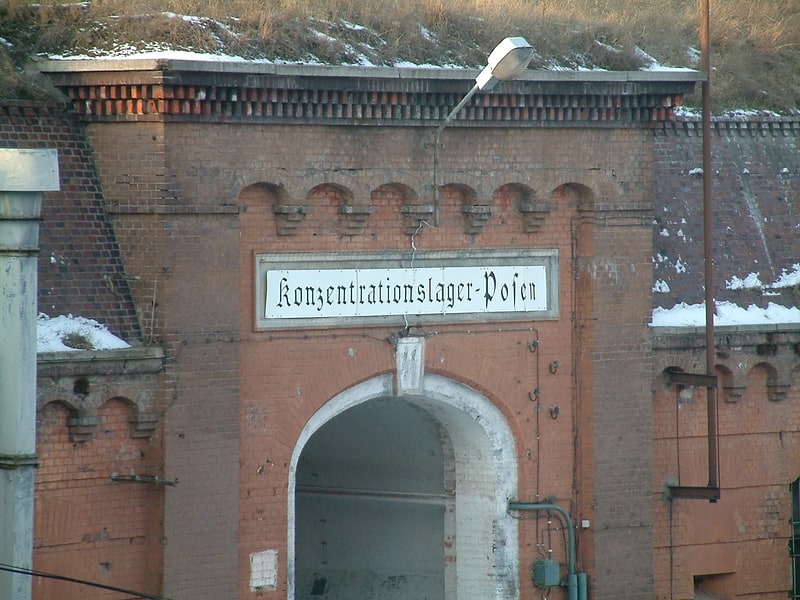
Historical place in Poland. Fort VII, officially Konzentrationslager Posen, was a Nazi German death camp set up in Poznań in German-occupied Poland during World War II, located in one of the 19th-century forts circling the city. According to different estimates, between 4,500 and 20,000 people, mostly Poles from Poznań and the surrounding region, died while imprisoned at the camp.[17]
Address: Al. Polska, 60-591 Poznan (Jeżyce)
National Museum
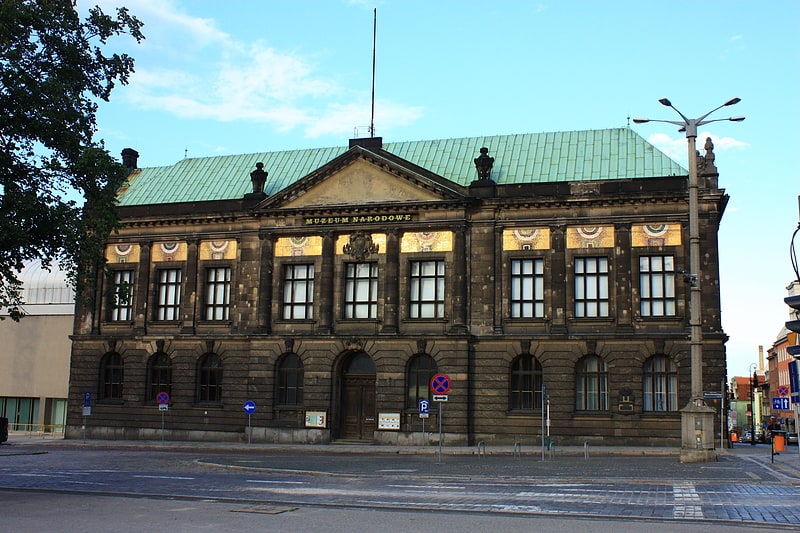
Also known as: Muzeum Narodowe w Poznaniu
State-owned art and coin collections. The National Museum in Poznań, Poland, abbreviated MNP, is a state-owned cultural institution and one of the largest museums in Poland. It houses a rich collection of Polish painting from the 16th century on, and a collection of foreign painting. The museum is also home to numismatic collections and a gallery of applied arts.[18]
Address: Aleje Marcinkowskiego 9, 60-702 Poznań (Stare Miasto)
Royal Castle
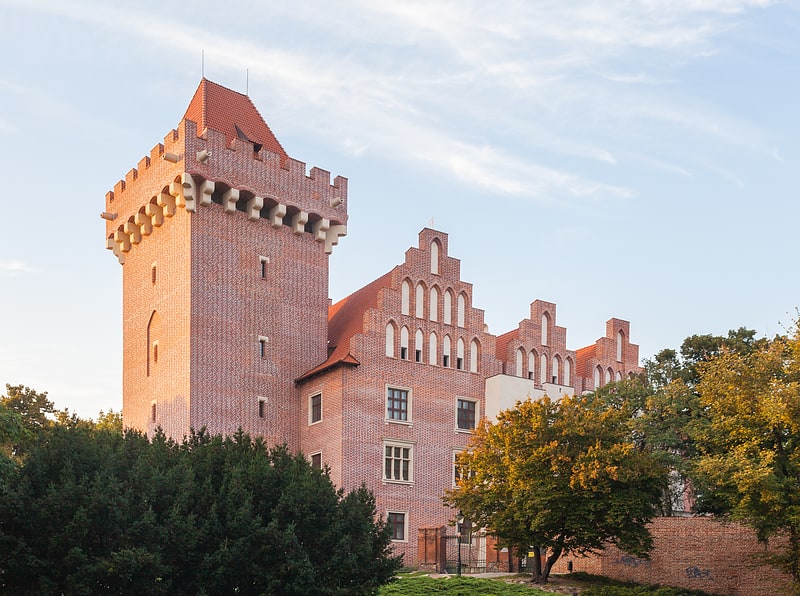
Also known as: Zamek Królewski w Poznaniu
Reconstructed 13th-century castle. The Royal Castle in Poznań dates from 1249 and the reign of Przemysł I. Located in the Polish city of Poznań, it was largely destroyed during the Second World War but has since been partly rebuilt.[19]
Nowe Zoo

New Zoo in Poznań - the second largest zoo in Poland, founded in 1974 on the White Mountain eastern green wedge of Poznań, in the SIM Malta area unit. It occupies an area of 120.68 ha situated in a hilly forest area with six extensive ponds with a total area of over 13 ha, providing a natural habitat for domestic fauna. The New Zoo is famous for its collection of birds of prey and owls, which is one of the richest in Europe.
The garden was opened on the 100th anniversary of the Old Zoo on Zwierzyniecka Street with which it forms an integral whole as the Zoological Garden in Poznan. Since 10 January 2016, the director of the zoo is Ewa Zgrabczyńska.
Address: Krancowa 81, 61-048 Poznan (Nowe Miasto)
Śródka
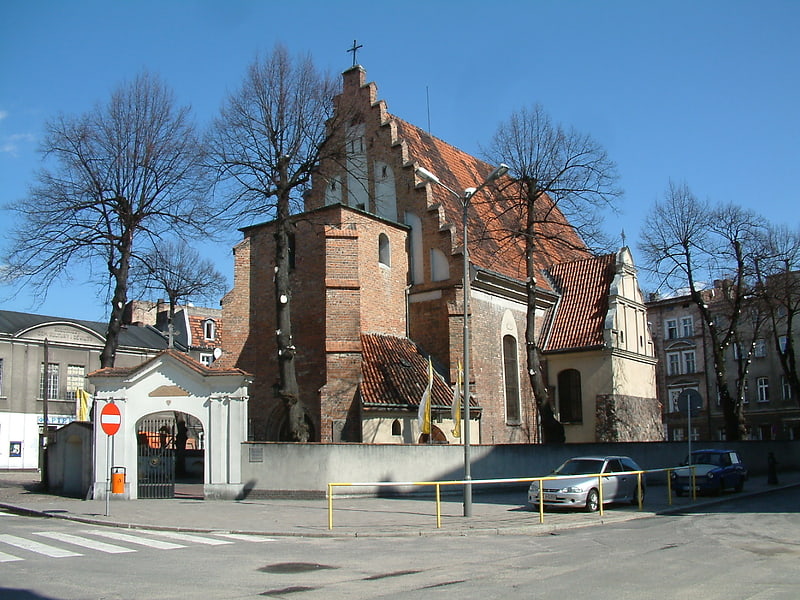
Śródka is a historic neighbourhood of the city of Poznań in western Poland. It lies on the right bank of the Warta river, opposite the island of Ostrów Tumski where the city's cathedral is situated. It belonged to the former district of Nowe Miasto; in the current administrative division of Poznań, Ostrów Śródka is part of an osiedle which also includes Ostrów Tumski and the neighbourhoods of Zawady and Komandoria.
Archaeologists have found evidence of settlement in Śródka which may date from the ninth century. By 1231 Sródka was a ducal settlement, and in 1288 it was granted to the bishops of Poznań. It obtained town rights in the 15th century (Ostrówek, at its western end, was a separate town), and was incorporated into the city of Poznań in 1800. Its name is related to the Polish word środa ("Wednesday"), this being the day of the weekly market once held there.
The district is centred on Rynek Śródecki (Śródka Marketplace), in the centre of which stands the 16th-century St. Margaret's church. On the north-west corner of the square is an Oratory of Saint Philip Neri, founded in 1665, the present building dating from the late 18th century. The small Malta cinema, sharing its name with nearby Lake Malta, was housed in the building next to the Oratory on the north side of the square, until its closure on 10 May 2010 (it is due to reopen in new premises in Jeżyce later in the year).
Since 2015 the Śródka Tale Mural painted on one of its tenement houses, makes up an important landmark of Śródka Marketplace. The mural refers to a history of the neighbourhood and features some local characters such as a butcher, a trumpeter as well as Władysław Odonic, the Duke of all Greater Poland.
On the eastern edge of Śródka is the church of St. Kazimierz, built for the Franciscans in 1685, with a monastery added in 1704. The monastery was dissolved by the Prussian authorities in 1794. The church currently belongs to the Polish branch of the Old Catholic Church, and the former monastery building is used as a school for the deaf.
A main road runs just south of Śródka, connecting it with Ostrów Tumski and central Poznań to the west, and with the roundabout called Rondo Śródka at the district's south-east corner. This road was built in the 1960s, with the demolition of some buildings on the southern edge of Śródka. Since 7 December 2007 Śródka has also been linked with Ostrów Tumski by a footbridge ("Bishop Jordan's Bridge", Most biskupa Jordana), constructed from the former main span of the now reconstructed St. Roch road bridge which crosses the Warta further south. A bridge previously existed in this place until 1969.
The ancient Church of St. John of Jerusalem Outside the Walls lies on the south-east corner of Rondo Śródka, just outside the district of Śródka itself.[20]
Polish Theatre
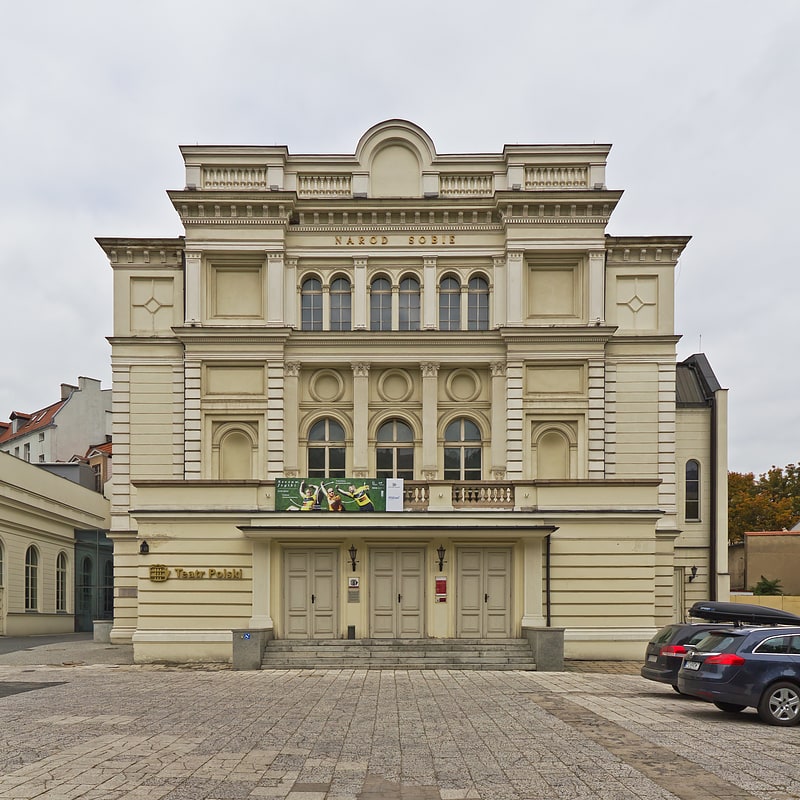
Also known as: Teatr Polski w Poznaniu
The Polish Theatre in Poznań is a Polish repertory theatre founded in 1875. Is one of the oldest and best-known theatres in Poland.[21]
Address: Poznań, 27 Grudnia St. 8/10
Merchants' Houses

Budnicze Houses - located south of the town hall, a group of three- or four-story narrow townhouses dating from the first half of the 16th century.
In contrast to the patrician tenement houses in the frontages of the market square, these belonged to somewhat poorer merchants. In their early Renaissance arcades they used to trade in fish, candles, torches and salt. Hence their former name - herring booths. It is one of the few examples of terraced market buildings. The current name comes from the fact that the seat of the Brotherhood of Budniks was located in tenement no. 17, which is evidenced by the coat of arms with three palms and a herring and the signature Fraternitatis Budnicorum.
It is known that in 1418 the town authorities put 17 herring houses into use. At the beginning of the 16th century some of the buildings received brick arcades. In 1534 the town authorities agreed to let the guild of builders build arcades for all buildings.
As time passed, the arcades were walled up, creating small stores. The tenement houses were almost completely destroyed during World War II. After the war, the arcades were reconstructed using the original Renaissance details. Narrow, one- and two-windowed facades of most of the tenements are covered with polychromes designed by Zbigniew Bednarowicz and made in the years 1953-1961.
From the south-west the group is closed by the former municipal office, also called the Municipal Writers' House, occupying plot no. 10. Since 1961 it has been the seat of the Cyril Ratajski Society of Poznań City Lovers.
Address: Stary Rynek, 61-772 Poznań (Stare Miasto)
Armored Weaponry Museum
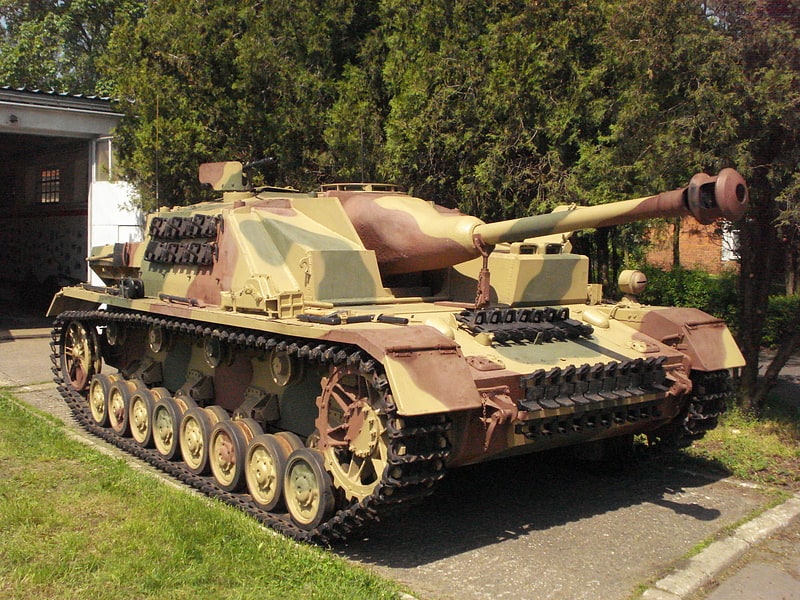
Also known as: Muzeum Broni Pancernej Centrum Szkolenia Wojsk Lądowych
Museum in Poznań, Poland. Muzeum Broni Pancernej Centrum Szkolenia Wojsk Lądowych im. Hetmana Polnego Koronnego Stefana Czarnieckiego w Poznaniu, abbreviated Muzeum Broni Pancernej CSWL is a large collection of military vehicles, formerly located within Land Forces Training Center in Poznań, Poland.
The museum has the largest collection of armoured fighting vehicles in Poland, displaying around 60 vehicles from the First World War, interwar, Second World War and Cold War periods. In 2018, the old museum was closed to visitors; it was re-opened in early 2019 in a new location.[22]
Address: Wojska Polskiego 84, 60-995 Poznań (Jeżyce)
Fort Winiary
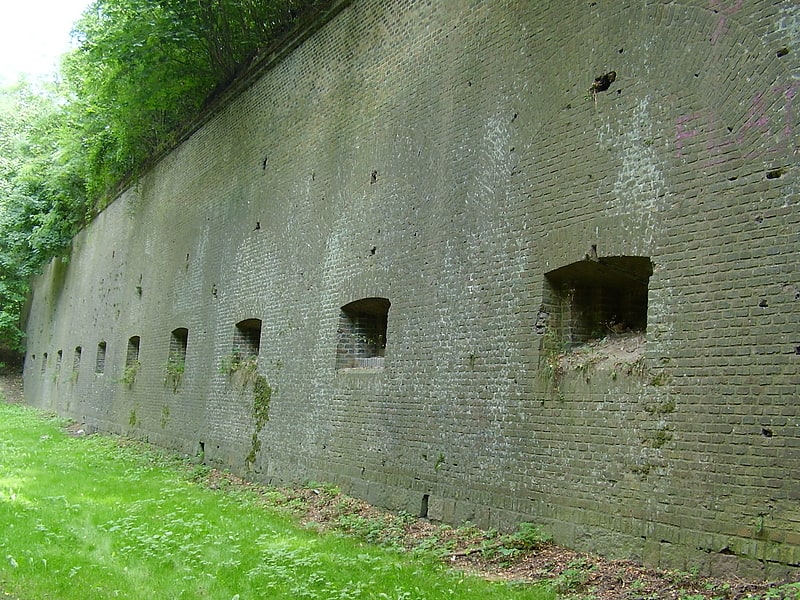
Tourist attraction in Poznań, Poland. Fort Winiary was part of Festung Posen, a system of defensive fortifications around the Polish city of Poznań.[23]
Dziewicza Góra
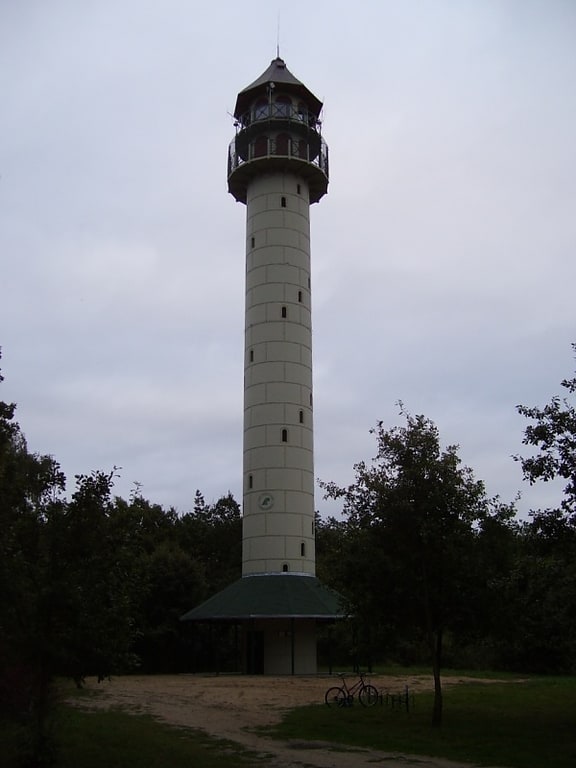
Dziewicza Góra is a hill close to Czerwonak, a few kilometres north-east of the city of Poznań in western Poland. It lies at the south-western extreme of Puszcza Zielonka Landscape Park, and is the Park's highest point, at 143 metres above sea level.
Its name (originally Dziewcza Góra) literally means Virgin Hill. It derives from the Cistercian nuns who were granted the hill in 1242.
An observation tower, with a height of 40 metres (130 ft), was built at the summit of the hill in 2005. This is used for forest fire observation, and is also open to the public at certain times, offering wide views of the surrounding countryside and the city of Poznań.[24]
Address: Dziewicza Baza, 62-004 Czerwonak
Brama Poznania ICHOT
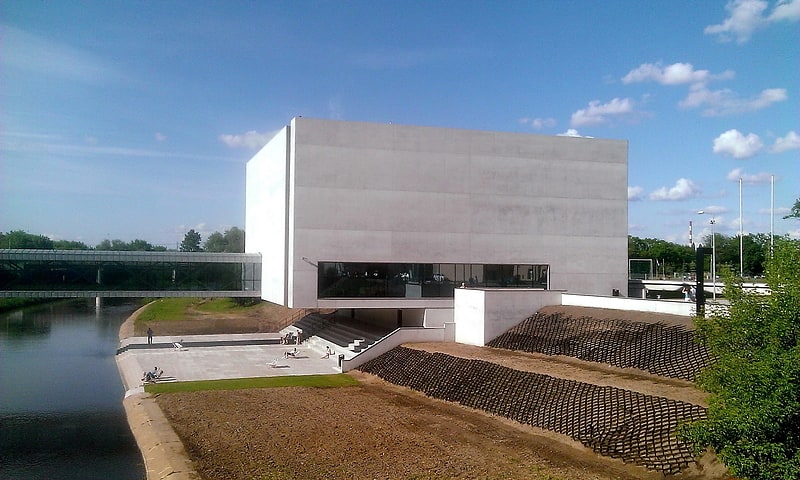
Brama Poznania ICHOT, formerly ICHOT - a cultural institution in Poznań dedicated to presenting, interpreting and promoting the history and heritage of Ostrow Tumski in Poznań. It is located in a complex of buildings located in the oldest part of the city, in Śródka and Ostrów Tumski, near the Jordan Bridge, on the bank of the Cybina River. The complex consists of a modern main building and the renovated Cathedral Sluice building, connected by a footbridge over the Cybina. The Poznań Gate ICHOT is operated by and is the seat of the Poznań Heritage Centre, a local government cultural institution of the city of Poznań.
The main part of the Poznań Gate ICHOT complex is a multimedia exhibition devoted to the past and present of Ostrów Tumski in Poznań. The Poznań Gate ICHOT also conducts exhibition, educational, publishing, training, popularization and other cultural activities in the field of cultural tourism.
Address: Gdańska 2, 61-123 Poznań (Nowe Miasto)
Old Zoo
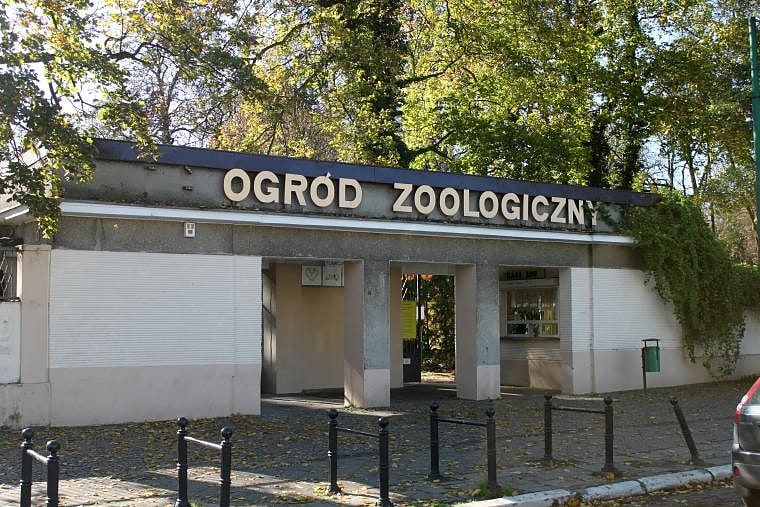
Also known as: Stare Zoo w Poznaniu
Zoological garden in Poznań, Poland. The Old Zoo in Poznań is one of the oldest zoological gardens in Poland, located in the city of Poznań, Greater Poland Voivodeship. It was founded in 1874 and was included on the register of objects of cultural heritage in 1978 as a unique example of a vivarium. The zoo started as a few animals kept by a restaurant owner in the early 1870s. It can thus be considered the oldest continuously operating Polish zoological garden. Together with the New Zoo in Poznań, which opened in 1974, it forms an integral part of the whole complex known as The Zoological Garden in Poznań.
The zoo is a member of both the European Association of Zoos and Aquaria since 1992 and the World Association of Zoos and Aquariums since 1999.[25]
Address: Zwierzyniecka 19, 60-814 Poznan (Jeżyce)
The Museum of Poznań Uprising 1956
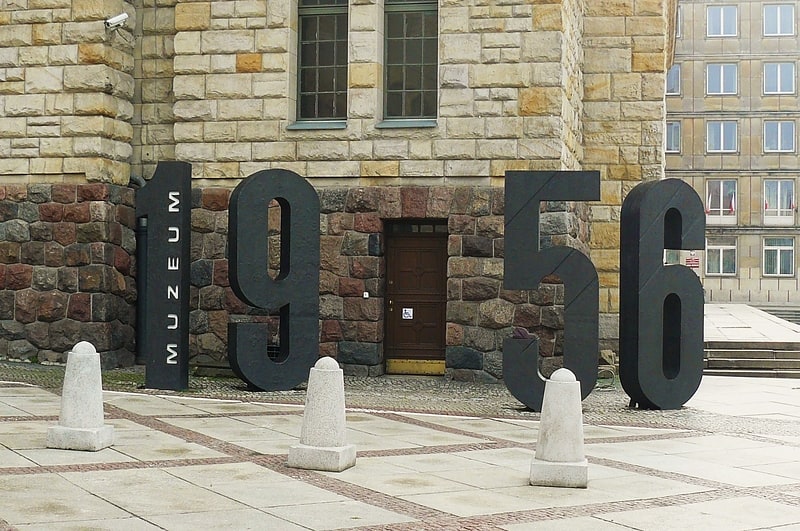
Museum of Poznań Uprising - June 1956 - historical museum, located in Poznań, in the Imperial Castle, facing Saint Martin's, a branch of the Wielkopolska Museum of Independence.
Address: Święty Marcin 80/82, 60-995 Poznań (Stare Miasto)
Plaża miejska Chwaliszewo
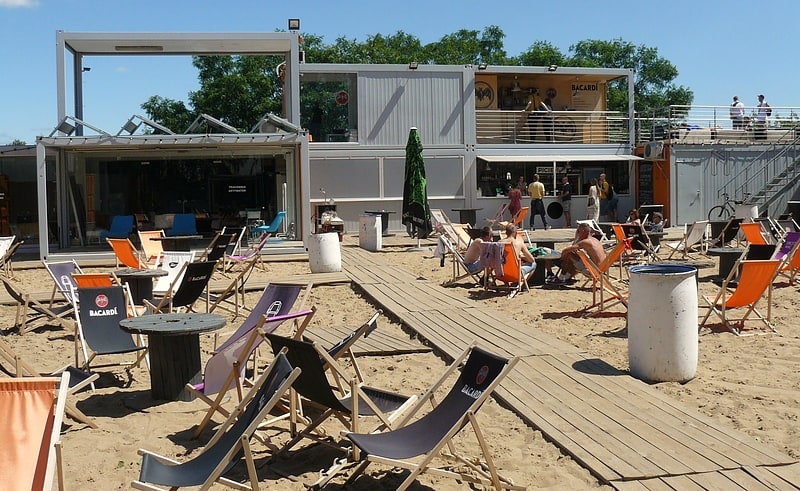
Beach
Address: Stare koryto Warty, Poznań (Stare Miasto)
Działyński Palace
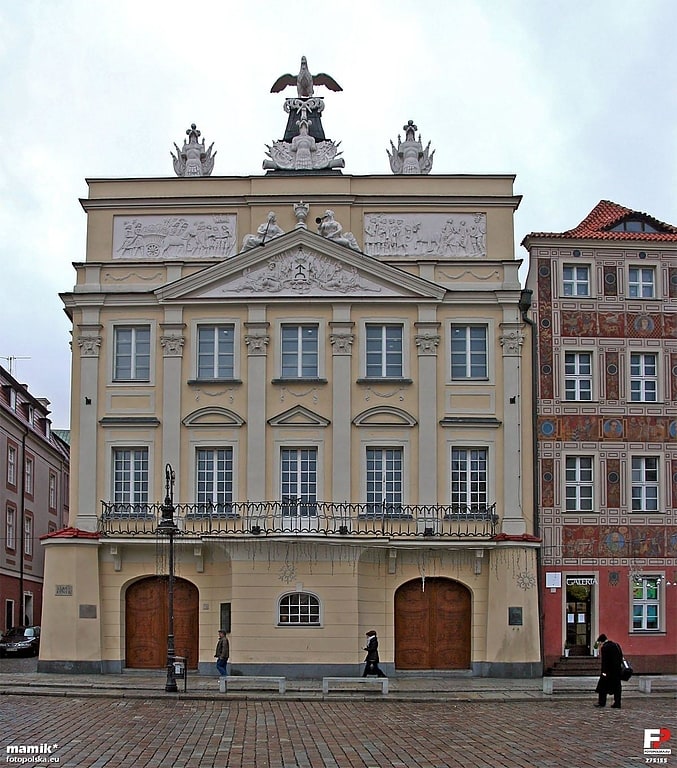
Also known as: Pałac Działyńskich w Poznaniu
Palace. Działyński Palace in Poznań, Poland is a Baroque palace built in 1773 - 1776. The building features a rich stucco-decorated interior of its "Red Hall" and a classicist façade decorated with sculptures. The palace serves as one of the locations of Kórnik Library today.[26]
Address: 78 Stary Rynek, Poznań (Stare Miasto)
Enigma Cipher Center
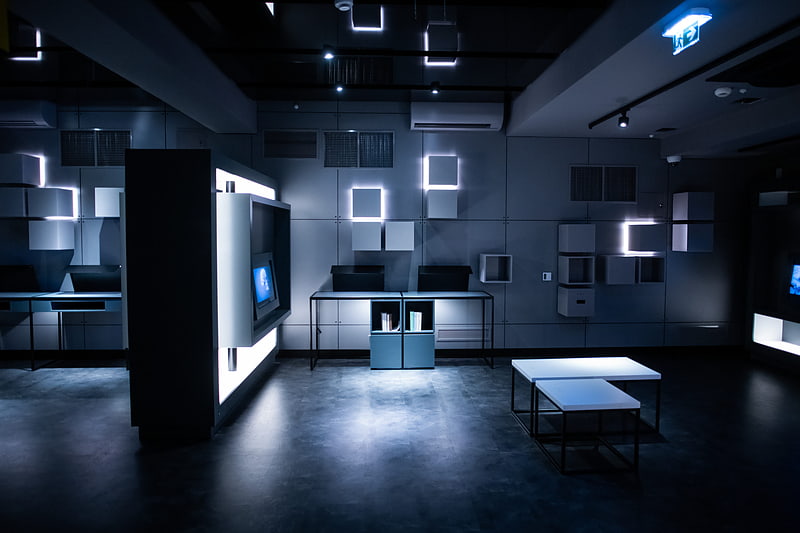
Enigma Cipher Center - a facility with an interactive multimedia exhibition devoted to the Enigma cipher machine and three Polish cryptologists: Marian Rejewski, Henryk Zygalski and Jerzy Różycki, located in the building of the former Collegium Historicum, now Collegium Martineum at the corner of Święty Marcin and Tadeusza Kościuszki streets in Poznań. Originally, the building served as the seat of the Provincial Committee of the Polish United Workers' Party. Then the building served as the Adam Mickiewicz University.
Enigma Cipher Center is a brand of the Poznan Heritage Center.
Address: Św. Marcin 78, 61-809 Poznań (Stare Miasto)
Church of St. Adalbert
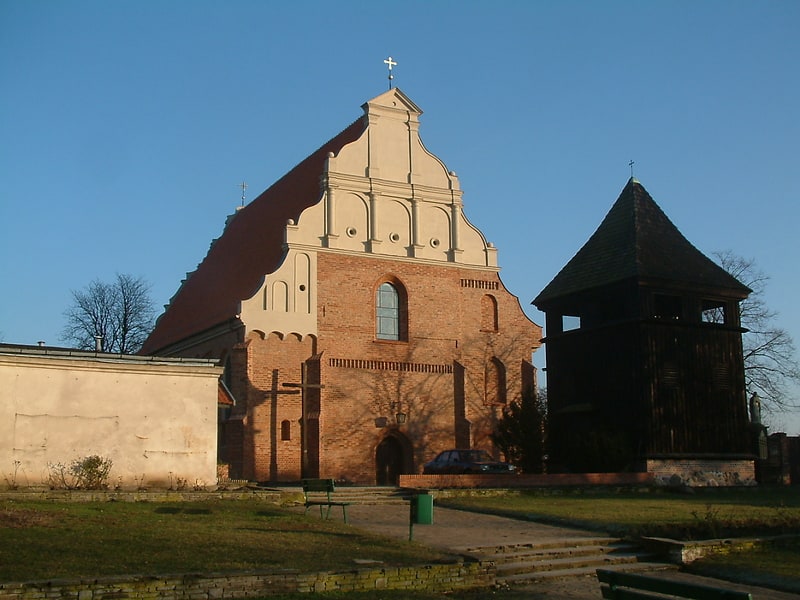
Also known as: Kościół św. Wojciecha w Poznaniu
Catholic church in Poznań, Poland. The Church of St. Adalbert or the Church of St. Wojciech in Poznań, Poland, was constructed in the 15th century. It was the one of only two Polish churches under the Nazis. The church has a 16th-century wooden belfry.[27]
Address: 1 Podgórze, Poznań (Stare Miasto)
Poznań Fortress
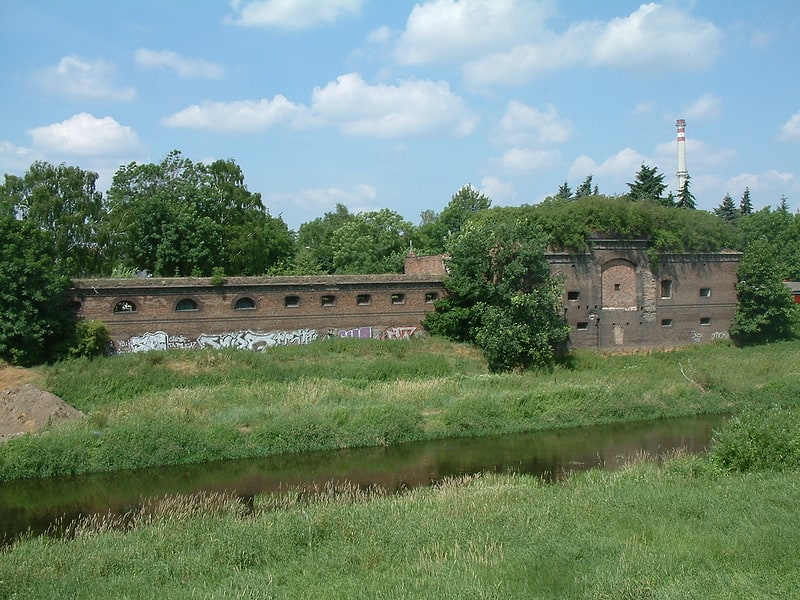
Also known as: Twierdza Poznań
Poznań Fortress, known in German as Festung Posen was a set of fortifications in the city of Poznań in western Poland, built under Prussian rule in the 19th and early 20th centuries. It represents the third largest system of its kind in Europe.
The first set of fortifications was a tight defensive ring around central Poznań, including the main citadel called Fort Winiary (now the Cytadela park). Construction of these fortifications began in 1828. Later, beginning in 1876, an outer defensive ring was built around the perimeter of the city, consisting chiefly of a series of "forts", which mostly still survive.
The term Festung Posen was also used by the Nazi German occupiers during the Red Army's advance in the closing phases of the Second World War, to refer to Poznań's status as one of the "strongholds" (Festungen) which were to be defended at all costs. It fell in the Battle of Poznań (1945), with Fort Winiary the last point of resistance.[28]
Poznań Royal-Imperial Route
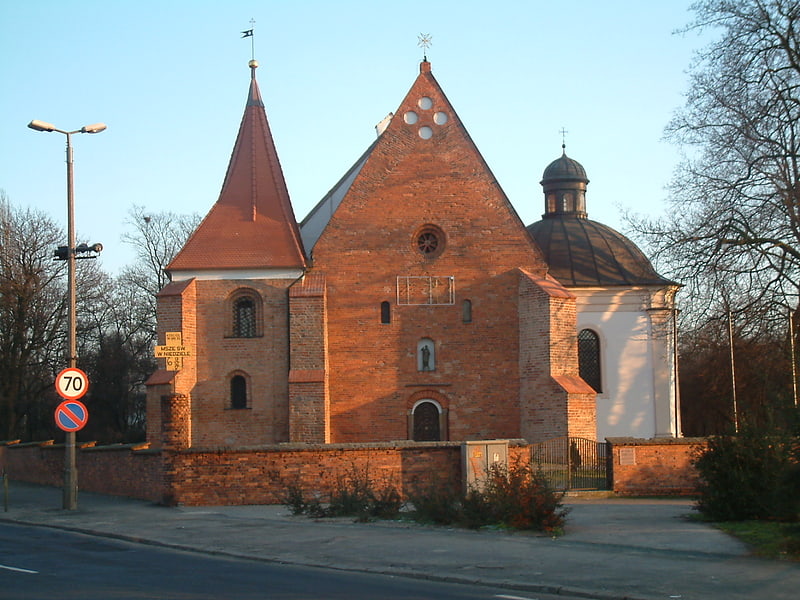
The Royal-Imperial Route in Poznań is a tourist walk running through the most important parts of the city and presenting the history, culture and identity of Poznań. The Route leads in a westward direction, from The Church of St. John Jerusalem behind the Wall to the Church of the Sacred Heart of Jesus and St. Florian.
The Royal–Imperial Route in Poznań is an idea of a tourist product that would combine important places and historical monuments of the city. "The Royal – Imperial Route" axis provides cultural, artistic and educational events that integrate the activities of all parties concerned and are the platform for co-operation of various entities: public administration, culture and science institutions, representatives of the academic circle, and tourist organisations. That is why "The Royal–Imperial Route" is Poznań's first complete partner project in which the City Hall motivates the other parties to work for the development of cultural tourism of the city and region.[29]